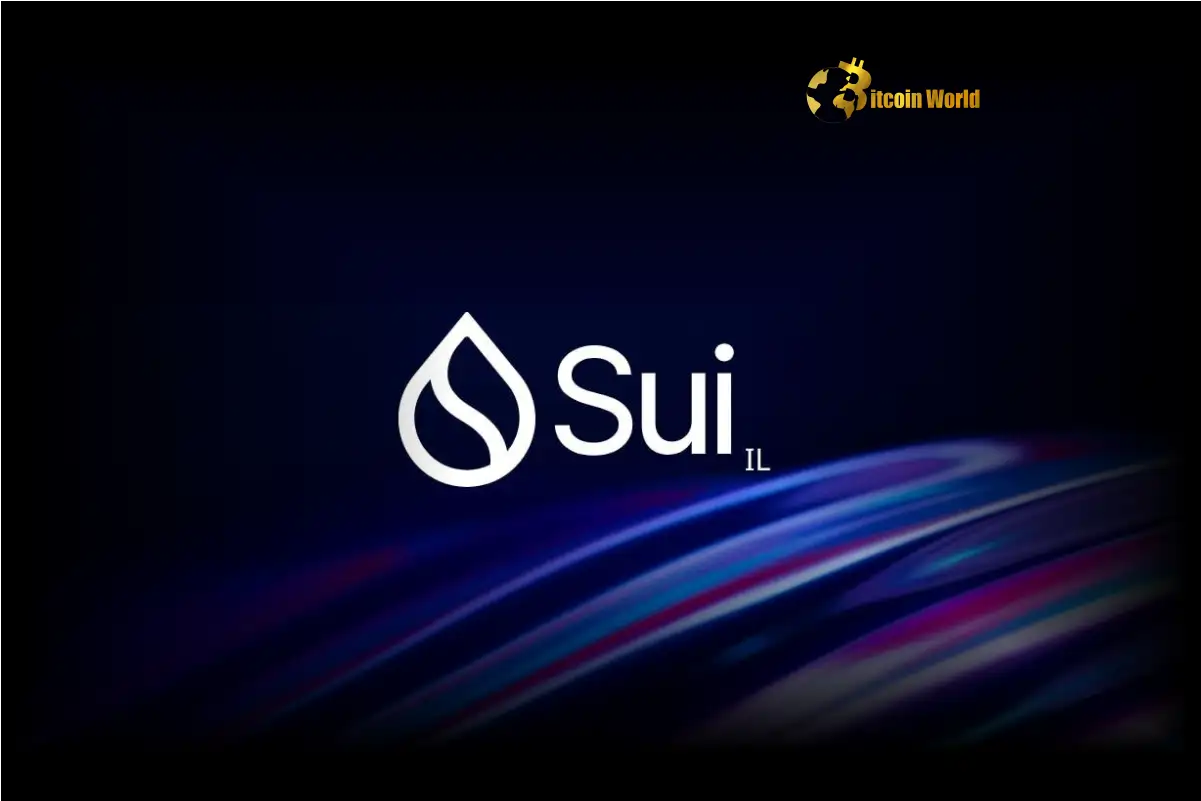BitcoinWorld

Revolutionary Injective Tokenization Unlocks $1.3B ETH Treasury for DeFi
Imagine a world where massive institutional treasuries, once locked away in traditional finance, seamlessly flow into the vibrant, dynamic realm of decentralized finance (DeFi). This isn’t a futuristic fantasy; it’s the groundbreaking reality being shaped by Injective. The news recently broke that Injective has taken a monumental leap forward, facilitating the Injective tokenization of SharpLink Gaming’s colossal $1.3 billion Ethereum treasury through a new initiative called SBET. This move isn’t just about moving numbers on a screen; it represents a significant turning point for institutional engagement in the blockchain space, promising to unlock unprecedented liquidity and innovation.
What is Injective Tokenization and How Does SBET Work?
At its core, Injective tokenization refers to the process of representing real-world assets or digital assets on the Injective blockchain, making them programmable and accessible within DeFi. Injective’s innovative iAssets framework is the underlying technology that makes this possible, providing a robust and secure environment for such complex operations.
SBET, in this context, is the specific vehicle created to bring SharpLink Gaming’s substantial Ethereum treasury on-chain. Think of SBET as a digital wrapper or a tokenized representation of these ETH holdings. Here’s a simplified breakdown of how it operates:
- Bridging the Gap: SBET acts as a bridge, allowing a large, existing Ethereum treasury to be represented and managed directly on the Injective blockchain.
- Leveraging iAssets: It utilizes Injective’s iAssets framework, which is designed to handle institutional-grade tokenization, ensuring security, compliance, and efficiency.
- Enabling DeFi Primitives: Once tokenized as SBET, these assets gain immediate access to a suite of DeFi functionalities, including staking, trading on decentralized exchanges, and integration into various DeFi protocols.
This initiative, as reported by Crypto Briefing, marks a critical step. It demonstrates Injective’s capability to onboard significant institutional capital, transforming static assets into dynamic, yield-generating opportunities within the decentralized ecosystem. The power of Injective tokenization lies in its ability to unlock new utility for traditionally held assets.
Why is This Injective Tokenization a Monumental Shift for Institutional Finance?
A $1.3 billion treasury moving on-chain is not just a large number; it’s a seismic event that signals a growing trust and willingness among traditional institutions to embrace blockchain technology. This particular instance of Injective tokenization carries immense weight for several reasons:
| Aspect | Impact of On-Chain Treasury |
|---|---|
| Enhanced Liquidity | Traditionally, large institutional holdings can be illiquid. Tokenizing them via SBET on Injective allows for fractional ownership and easier trading, significantly boosting liquidity. |
| Increased Transparency | Blockchain technology offers unparalleled transparency. Every transaction involving SBET can be publicly verified, fostering trust and accountability, a stark contrast to opaque traditional financial systems. |
| Operational Efficiency | Automated processes, smart contracts, and reduced intermediaries cut down on operational costs and time delays often associated with managing large treasuries in conventional finance. |
| Global Accessibility | DeFi is inherently global and permissionless. Tokenized assets become accessible to a wider range of participants, breaking down geographical barriers and fostering a more inclusive financial system. |
This event underscores a maturing narrative in the crypto space: blockchain is no longer just for retail investors or speculative ventures. It’s becoming a serious infrastructure layer for established financial entities seeking efficiency, transparency, and new avenues for growth. The confidence shown by SharpLink Gaming in Injective’s framework sets a powerful precedent for others to follow, further validating the potential of Injective tokenization for institutional adoption.
Beyond the Hype: What Benefits Does Injective Tokenization Offer?
The immediate benefits of this Injective tokenization go beyond just bringing assets on-chain. They unlock a suite of powerful functionalities that can significantly enhance the utility and value of SharpLink Gaming’s treasury, and by extension, serve as a model for future institutional participants:
- DeFi Integration: Once tokenized as SBET, the $1.3 billion treasury can actively participate in the vast Injective DeFi ecosystem. This means accessing lending protocols, yield farming opportunities, and various decentralized applications that were previously out of reach.
- Staking Opportunities: SBET can potentially be staked, allowing SharpLink Gaming to earn passive income on their treasury holdings, adding another layer of value generation beyond simple HODLing.
- Seamless Trading: The tokenized assets can be traded on Injective’s high-performance decentralized exchange (DEX), offering fast, secure, and censorship-resistant trading without relying on centralized intermediaries.
- Enhanced Capital Efficiency: By making a large, otherwise static, treasury dynamic and programmable, Injective tokenization allows for more efficient capital allocation and utilization within the company’s financial strategy.
- Future-Proofing Assets: Embracing blockchain technology positions institutions at the forefront of financial innovation, future-proofing their assets against an increasingly digital global economy.
These benefits highlight how Injective tokenization is not merely a technical exercise but a strategic move that offers tangible financial and operational advantages for institutions ready to innovate.
Navigating the Path: Challenges in Institutional Injective Tokenization
While the promise of Injective tokenization for institutional assets is immense, it’s crucial to acknowledge the challenges that still need to be addressed for widespread adoption:
- Regulatory Clarity: The regulatory landscape for tokenized securities and institutional DeFi is still evolving. Institutions require clear guidelines and legal frameworks to operate with confidence and ensure compliance across different jurisdictions.
- Security Concerns: While blockchain technology is inherently secure, the risk of smart contract vulnerabilities, exploits, and private key management remains a paramount concern for managing such large sums of capital. Robust auditing and security protocols are essential.
- Interoperability: Ensuring seamless interaction between different blockchains and traditional financial systems is vital for a truly integrated ecosystem. While Injective is highly interoperable, the broader crypto landscape still faces fragmentation.
- Education and Adoption Barriers: Many traditional institutions lack the in-depth understanding or the technical infrastructure to comfortably engage with DeFi. Bridging this knowledge gap and providing user-friendly interfaces are critical.
Injective, with its focus on institutional-grade infrastructure and security, is actively working to mitigate these challenges, paving a smoother path for future institutional Injective tokenization efforts.
The Road Ahead: Injective Tokenization and the Future of On-Chain Assets
The tokenization of SharpLink Gaming’s $1.3 billion ETH treasury through SBET on Injective is more than just a single transaction; it’s a powerful demonstration of what’s possible when traditional finance meets cutting-edge blockchain technology. This event could very well be a catalyst, encouraging other large entities to explore the immense potential of Injective tokenization and on-chain asset management.
We are likely to see a trend where more illiquid or traditionally static assets – from real estate and art to corporate bonds and private equity – find their way onto the blockchain. Injective, with its robust infrastructure and focus on institutional-grade solutions, is exceptionally well-positioned to be a leader in this transformation. The future of finance is increasingly decentralized, and Injective is actively building the bridges to connect the old world with the new, unlocking unparalleled efficiency, transparency, and liquidity for everyone.
Conclusion: A New Era for Institutional Finance
The successful Injective tokenization of SharpLink Gaming’s $1.3 billion Ethereum treasury via SBET marks a pivotal moment in the evolution of institutional finance. It’s a clear signal that the lines between traditional finance and decentralized finance are blurring, creating a hybrid future where efficiency, transparency, and accessibility are paramount. Injective’s iAssets framework is proving to be a robust solution for bringing significant capital on-chain, enabling new forms of value creation through staking, trading, and comprehensive DeFi integration. As more institutions recognize the profound benefits and overcome the initial challenges, Injective stands ready to facilitate this paradigm shift, ushering in a truly revolutionary era for global asset management.
Frequently Asked Questions (FAQs)
Q1: What exactly is SBET?
SBET is a tokenized representation of SharpLink Gaming’s $1.3 billion Ethereum treasury on the Injective blockchain. It allows these significant ETH holdings to be managed, traded, and integrated into DeFi protocols using Injective’s iAssets framework.
Q2: Why is tokenizing a $1.3 billion treasury significant?
Tokenizing such a large treasury is significant because it demonstrates strong institutional confidence in blockchain technology and DeFi. It unlocks enhanced liquidity, transparency, and operational efficiency for massive traditional assets, setting a precedent for broader institutional adoption.
Q3: What benefits does SBET offer SharpLink Gaming?
SBET offers SharpLink Gaming access to DeFi integration, potential staking rewards, seamless trading on Injective’s DEX, enhanced capital efficiency, and positions them at the forefront of financial innovation by future-proofing their assets.
Q4: Are there any risks or challenges associated with institutional tokenization?
Yes, challenges include evolving regulatory clarity, ensuring robust security against smart contract vulnerabilities, achieving seamless interoperability between different systems, and overcoming education barriers for traditional financial institutions. Injective is actively working to address these.
Q5: How does Injective’s iAssets framework support this tokenization?
Injective’s iAssets framework provides the secure, compliant, and efficient infrastructure necessary for institutional-grade tokenization. It’s designed to handle the complexities of bringing real-world and large digital assets onto the blockchain, ensuring they can interact with DeFi protocols effectively.
Did you find this article insightful? Share it with your network and help spread the word about the revolutionary advancements in institutional DeFi and Injective tokenization!
To learn more about the latest DeFi market trends, explore our article on key developments shaping Injective’s ecosystem expansion.
This post Revolutionary Injective Tokenization Unlocks $1.3B ETH Treasury for DeFi first appeared on BitcoinWorld and is written by Editorial Team





